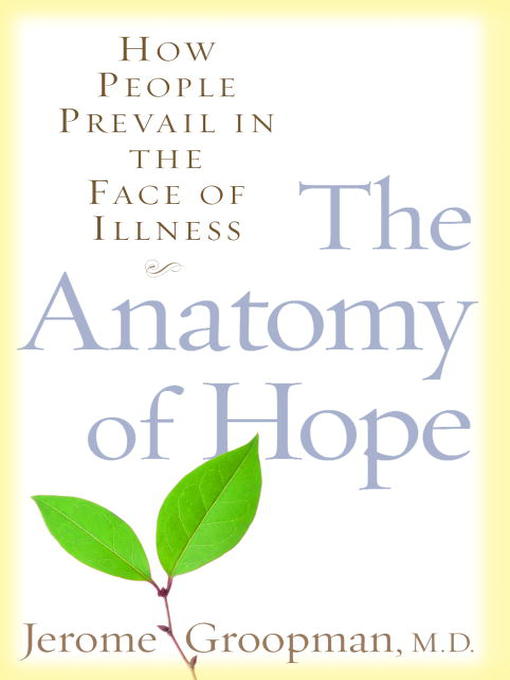
The Anatomy of Hope
How People Prevail in the Face of Illness
چگونه مردم در مواجهه با بیماری تظاهر میکنند
کتاب های مرتبط
- اطلاعات
- نقد و بررسی
- دیدگاه کاربران
نقد و بررسی

October 27, 2003
In this provocative book, New Yorker
staff writer and Harvard Medical School professor Groopman (Second Opinions
; The Measure of Our Days
) explores the way hope affects one's capacity to cope with serious illness. Drawing on his 30-year career in hematology and oncology, Groopman presents stories based on his patients and his own debilitating back injury. Through these moving if somewhat one-dimensional portraits, he reveals the role of memory, family and faith in hope and how they can influence healing by affecting treatment decisions and resilience. Sharing his own blunders and successes, Groopman underscores the power doctors and other health care providers have to instill or kill hope. He also explains that hope can be fostered without glossing over medical realities: "Hope... does not cast a veil over perception and thought. In this way, it is different from blind optimism: It brings reality into sharp focus." In the final chapters of the book, Groopman examines the existing science behind the mind-body connection by reviewing, for example, remarkable studies on the placebo effect. By the end of the book, Groopman successfully convinces that hope can offer not only solace but strength to those living with medical uncertainty.

August 1, 2003
Drawing on his own experience with a back injury, New Yorker staff writer Groopman explains how that feathered thing called hope can alleviate illness.
Copyright 2003 Library Journal, LLC Used with permission.

Starred review from December 15, 2003
Veteran physician and " New Yorker" staff writer Groopman is eloquent about something he didn't learn in medical school, that hope does indeed have a biological basis. His breakthrough discovery, decades in the making, was inspired not so much by his medical practice as by personal experience. He shares his story about enduring years of debilitating back pain until he found hope through an effective intervention that led to recovery. He relates how, in true scientific method, he then embarked on researching and, perhaps, proving his theory about the roots of hope and its efficacy in healing. As the book unfolds, he establishes the difference between false and true hope--to wit, "True hope has no room for delusion"--recounts cures that might be considered miraculous were it not for the role hope played in them, and consults such respected experts as Harvard Medical School's Bruce Cohen, who debunks the notion of separation of mind and body. Mind, Cohen says, is a manifestation of the brain, and what we perceive as products of the mind (e.g., consciousness, thoughts, and feelings) are the results of chemistry and electrical circuits. And there is more than that to ponder in this cogent, intriguing, hopeful volume.(Reprinted with permission of Booklist, copyright 2003, American Library Association.)

























دیدگاه کاربران